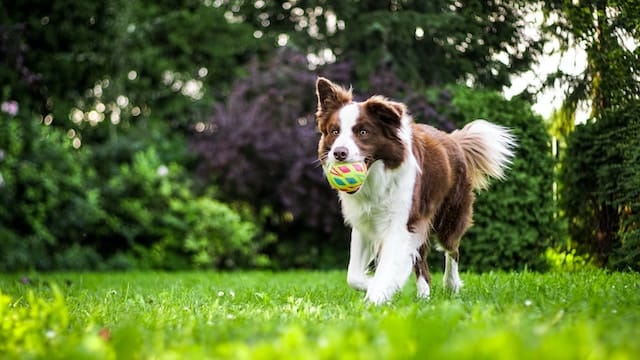Introduction
Training your dog is similar to providing your children with the resources they will need to be successful in life, beyond the foundations that they already know. Your education will make their lives better in a variety of ways, which will deepen your relationship with them and improve the likelihood that you will be able to peacefully coexist with them in the future. The canine training techniques that are described in the following paragraphs are ones that both you and your pet might find useful. So have a look on these steps to train your pet.

1. Basic Obedience Training
Obedience training prepares a dog for polite behavior in social situations. A polite dog is one that responds appropriately to standard orders like “sit,” “stay,” “come,” and “heel.” Once you’ve taught your dog these signs, you’ll have more influence over his actions in many social contexts. Protect your dog and establish your dominance by training and rewarding appropriate behavior.
2. Socialization Skills
The confidence and demeanor of a dog among other animals, people, and environments can be greatly improved via early and consistent socialization throughout training. It’s important for your dog’s social development if you take it to public settings like parks and streets where it can mingle with strangers.
If you introduce your dog to new situations and other canines gradually, everyone will have a better experience. Aggression and other negative behaviors are reduced in trained dogs. It will be simple to take your pet with you everywhere you go.
3. Leash Training
Your dog and you should love going on walks on a leash. Teaching your dog to walk well on a leash without tugging, lunging, or acting erratically is essential. Leash training has many benefits, including avoiding embarrassing situations like being dragged down the street by your dog. When walking your dog, you’ll be in a better position to exercise command and encourage desirable behavior.
4. House Training
Housebreaking, or “potty training,” requires showing your dog when and where it is appropriate to relieve itself. Techniques incorporate routines, such as only allowing the dog outside at designated times, and positive reinforcement, such as treats.
To “house train” a dog means to accustom him or her to eliminating in an indoor environment. The less complicated and risky your home is, the safer you and your loved one will feel. You need to be consistent, patient, and utilize rewards to successfully house train your pet.
5. Crate Training
Crate training is the most effective method for showing your dog that the kennel or crate is his or her own private zone. Your dog will have a secure haven to retreat to if life gets overwhelming.
Crate training is an efficient method of housebreaking since dogs have an innate, compulsive cleanliness to their resting surroundings. A well-trained dog in a crate can be a tremendous assistance when traveling, taking your dog to the vet, or hosting guests.
6. Behavioral Problem Solving
There are several potential causes of behavioral issues in dogs, including but not limited to fear, anxiety, a lack of socialization, and traumatic experiences. Excessive barking, nibbling on non-chewable items, digging, jumping, or aggression are only some of the undesirable behaviors that “behavior problem solving” is commonly employed to manage and improve.
Positive training approaches can be used to correct undesirable behaviors in your dog once the underlying causes have been identified. The time and energy you put into figuring out what’s causing your dog’s bad behavior will be appreciated by everyone in the household, canine included.
7. Advanced Training
Training your dog beyond the fundamentals is essential for the dog’s mental and physical well-being. You can train your dog for search and rescue or scent work by enrolling them in an agility class or teaching them tricks. You and your dog will both gain from the stimulation of fresh knowledge and mental activity that these activities give. Training your dog to a higher level is good for his or her mental, physical, and emotional well-being.
8. Recall Training
If you want to feel comfortable leaving your dog off leash, you must train him to come when called. Training your dog to ignore interruptions is essential if you want it to respond to its name.
Maintaining your dog’s composure in off-leash locations like dog parks and gated yards requires a good recall command. Recall training methods typically comprise distracting the target so they can’t concentrate on the recall command and reinforcing the target’s behavior in response to the recall command. While doing this, you and your partner may benefit physically and emotionally from spending time together.
9. Canine Fitness and Enrichment
Playtime is essential to a dog’s health and pleasure since it provides both physical activity and cerebral stimulation. A dog’s mental and physical well-being are both improved by regular training sessions. Regular exercise and playtime with interactive toys, puzzle games, or even scent work can improve your dog’s physical, mental, and emotional health. You can protect your pet from harmful, bored behavior with these, which are great for their health.
10. Positive Reinforcement Techniques
The only kind and efficient way to train a dog is via positive reinforcement. You will use positive rewards, such as treats, praise, and playtime, to train your dog to behave the way you desire. Your dog will be more likely to repeat the action that earned the reward if he or she understands the connection between the two.
Building a strong relationship with your dog and earning his trust through rewards is essential for training to be successful. Positive reinforcement, as opposed to scolding, will teach your dog to make good choices and increase his or her responsiveness to training.
Conclusion
Dogs benefit from a wide variety of activities, including but not limited to: obedience and advanced training, socialization, problem solving, exercise, and mental stimulation. The proud master of a well-mannered canine can rest easy. Building trust, improving communication, and providing everyday support for your dog takes time, patience, and the application of positive reinforcement. The rewards of training much outweigh the effort required to provide regular, supportive training.











